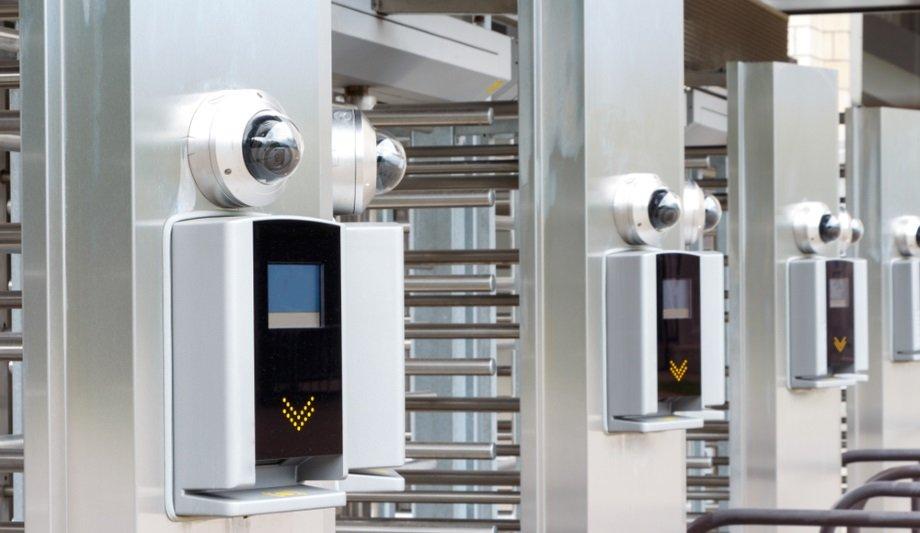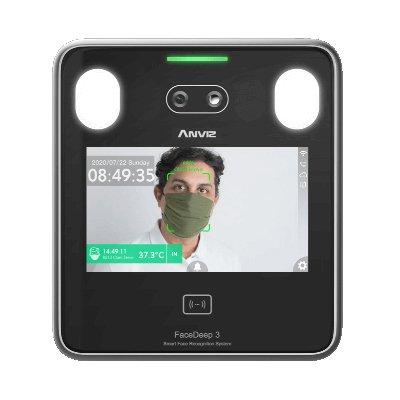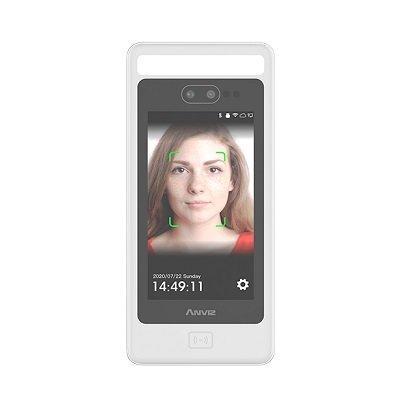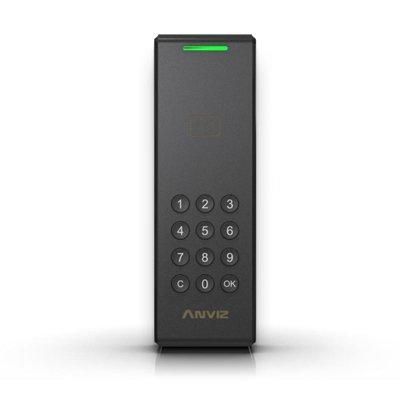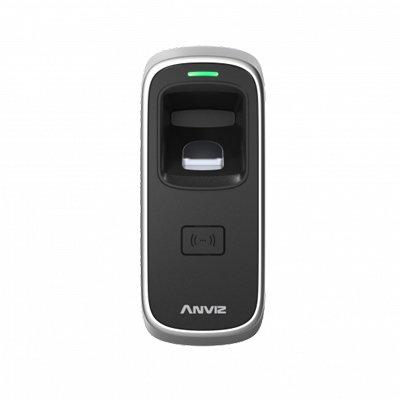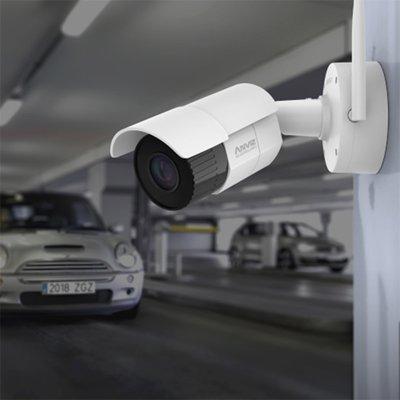
What’s new in the integration of video and access control?
Editor Introduction
Integration of access control and video has been a reality for decades. The combination of our industry’s dominant technologies provides a one-two punch when it comes to maximising the security benefits of a system. Access control tracks ‘events,’ while video provides visibility into those events. But the benefits of integrating video and access control are far from static. Rather, today’s systems are becoming even more valuable as they incorporate elements such as artificial intelligence (AI) and the cloud. Regarding integration of video and access control, we asked this week’s Expert Panel Roundtable a simple question: What’s new?
Video and access control technologies expand security teams’ abilities to capture critical signals and address and mitigate threats. This includes knowing who is entering and exiting particular areas of an enterprise, vehicle sightings, and who, within an organisation, has access to proprietary information and certain areas of a building. Integrating these technologies into a holistic protective intelligence platform will create a stronger and more comprehensive system which allows security teams to collect and connect data points to prevent potential threats to their organisation. Connecting these otherwise disparate signals can create a powerful, end-to-end view of the threat landscape. Furthermore, it will better equip security teams to detect suspicious activity, understand and gain context of a situation, and act appropriately by utilising a connected workflow to make overall informed and proactive decisions.
What’s new with video and access control integration is using the video as a credential. By implementing facial recognition, a person's face becomes their card (frictionless access) or is another credential in addition to their card to verify their identity (multi-factor authentication) and gain access. Once in the realm of ultra-high security facilities, using facial recognition with access control is becoming more mainstream and cost-effective. This is not just for traditional access control – it is also being used to validate identification in order to access age-restricted products, such as alcohol and cannabis in retail stores, and for entry to multi-tenant apartment and office buildings. By adding a video-centric technology like facial recognition, you can take the integration of video and access control to another level, increasing security and at the same time enabling faster and easier access for users.
The security industry is already moving beyond simply integrating video and access control. Organisations are embracing unified solutions with a user interface that displays all possible physical security functions. This includes not only access control and video but also license plat recognition (LPR), intercom, fire and intrusion alarms, building management systems and more. The path forward is a unified system that allows operators to leverage every connected system and improve the flow of information across a wide range of activities and functions at every level of the organisation. Whether they are in a security operations center or accessing their system remotely using a web-based application, operators can have one seamless experience. By having the information they need in a single interface, organisations are empowered to be more efficient, make better decisions, and respond to incidents faster.
The basic premise of integrating video and access isn’t a new concept; however, the options available and complexity of the integration has vastly changed. Today, the opportunity to create an amazing user experience is now a reality. Deploying and integrating different systems for access and video introduces a layer of complexity on both the installation and the customer usability. Conversely, a single platform that offers one native user interface for both video and access delivers a great user experience that allows end users to think of their system as a business platform, not a security system. For example, while on the go and using a mobile app, a user can receive a notification that the line at one of their retail locations has exceeded a 10-minute wait, or they can remotely unlock a door and monitor the video to allow a delivery to take place.
Video and access control integration has matured to the point where video analytics and AI technology can also be leveraged as part of the integrated system. ONVIF Profile M, which standardises the handling of metadata and analytics events, enables video sensors to act as credential input devices. A good example of this is a camera using analytics to scan a QR code of a visitor badge or using facial recognition analytics to deliver the credential data to the access control system. While this can be accomplished using proprietary APIs, ONVIF profiles make it easier to combine a variety of cameras from different manufacturers to connect these systems together.
It is a trend for security industry to integrate video surveillance products and access control products into one platform. For enterprises, they can greatly save deployment costs, and can easily manage and receive related messages within a software or APP. At the same time, the linkage can be created in an integrated platform, video surveillance cameras can double-confirm access control events, and video surveillance cameras can also make access control devices respond accordingly based on the different alarm events. Looking into the latest trends, more brands choose to connect and integrate in the cloud. One disadvantage of local integration is that enterprises need to deploy an integration server in each branch and the cost of system expansion will accumulate, and non-centrally managed systems are not easy to maintain. The advantage of integrating through the cloud is that the cost of on-premises deployment can be saved, and the data exchange between devices is not limited by the location of the device.
The merging of video and access control services in the cloud is an exciting new development that promises to add considerable additional benefits for security operators. Backed up by the ever-increasing use of open protocols for integration, this ‘marriage’ of security systems in a combined online space is a great example of how combined solutions are more efficient, easier to install/commission, more flexible, and more straightforward to use. Added to this is the use of ever-more-powerful analytics, which improve the utility of data in solving issues and managing/protecting people, including the safety of lone workers or personnel in dangerous environments. Ultimately these integrated systems generate powerful and accurate data that has the scope to be the ‘eyes and ears’ of an organisation for commercial and operational benefits, just as much as safety and security.
The global pandemic has resulted in many people reconsidering priorities and the way we go about daily life, specifically keeping ourselves and those around us safe. To meet demand, the security industry has developed and implemented new technologies to help minimise the spreading of germs. Top among these are touchless security solutions that eliminate the need for a person to touch a surface or device in order to request or gain access into a facility. Intercom systems have adapted to incorporate touchless elements. When integrated with an access control solution, the intercom system can detect motion within a preset range and send communication to a security officer or front desk attendant. This eliminates the need for a visitor to touch a shared keypad or communal door handle. For both residential and commercial spaces, this offers efficiency with regards to the rising increase in package, grocery, and food deliveries, and satisfies the desire by building managers to leverage intercoms to manage the flow of visitors. Delivery personnel can enter more seamlessly without the need to put anything down or be personally assisted by a staff member or tenant.
Editor Summary
One of the ways video and access control are becoming more closely integrated is using AI to analyse the video corresponding to every badge swipe. Video can also now be used as a credential when facial recognition is deployed. Broader ‘unified’ solutions are combining video and access control with an even wider array of system components. Cloud integration is expanding the ways systems can be connected and integrated. As our Expert Panelists point out, the combination of video and access control is a mature approach that is still finding new ways to contribute to the security of an enterprise.
Anviz Global Inc. products
Anviz Global Inc. news
Anviz, together with its key partner Solotec, participated in the 30th ESS+ International Security Fair, the most international and comprehensive security fair in Latin America, Central & South America, and the Caribbean, with exhibitors from 20 countries and regions around the world, attracting nearly 20,000 professionals from all sectors of the industry. In this exhibition, Anviz focused on the popular and innovative products of smart biometric access control and time & attendance so...
Suddenly, artificial intelligence (AI) is everywhere. The smart technology brings a range of benefits to our lives, from streamlining everyday tasks to making scientific breakthroughs. The advantages of AI and machine learning (ML) also include automating repetitive tasks, analysing vast amounts of data, and minimising human error. But how do these benefits apply to the physical security industry, and is there a downside? We asked this week’s Expert Panel Roundtable: What are the benefits,...
In collaboration with key partner Trinet Technologies Pte Ltd, Anviz organised two successful roadshow events. Both events brought together more than 30 industry experts who showed great enthusiasm for Anviz's business model of user scenario-driven solutions and interest in the new features of the product. Need for Southeast Asian Markets: RCEP Brings New Opportunities, Largest Incremental Market in the World As the largest FTA in the world, which will lead the development of global free trade...
Anviz Global Inc. case studies
When they talk about digitalisation, there is one topic that keeps coming up: Smart Office. Intelligent IoT solutions that makes the users’ everyday lives safer, more comfortable, and more efficient. Systems to centrally manage employees' access with no keys and physical cards - face recognition, manage employee time tracking, and secure office printing with the embedded face recognition reader, are now seen as state-of-the-art. Dürr, founded in 1896, is a mechanical and plant engine...
The Middle East has recently expanded its real estate market as the region's economy grows and urbanisation accelerates. This trend has led to an increasing demand for smart security, and the pace of digital intelligence change is gradually increasing. The security industry in the Middle East is rapidly growing, driven by the government's strong emphasis on national security and terrorism prevention. Centralised systems management Significant attention and investment have been directed towar...
As the UAE's economy progressed, its territory became the world's experimental zone for pioneering construction technologies. The continuous rise of the construction industry has introduced a large number of labourers to stations on construction sites. How to systematically manage workers under regulations, while ensuring the rights and interests of both workers and enterprises is the main problem currently faced by NGC on its way forward. The customer Nael General Contracting (NGC...
Anviz Global Inc. videos
Anviz Global Inc. white papers
Expert commentary
Security beat
Security bytes
- Getting to know Dan Grimm, VP and General Manager of Computer Vision at RealNetworks
- Big wins and the importance of showing up: Insights from SourceSecurity.com editor Larry Anderson
- Setting goals, business travels and radioactivity: Success secrets from Tiandy's John van den Elzen
- Getting to know Jeff Burgess, President/CEO at BCDVideo
Mobile access articles
HID, a worldwide pioneer in trusted identity solutions, announces the expansion of its signature line of Signo™ Readers to include models that meet varying customer needs–from harsh condit...
HID, a worldwide pioneer in trusted identity solutions, announces the expansion of its signature line of Signo™ Readers to include models that meet varying customer needs – from harsh cond...
Munich’s Hofbräuhaus enjoys an iconic status, as both a heritage property and a spiritual home for lovers of German beer. “In this historic building is the world’s most famous t...
Radiofrequency (RF) technology specialists, SPX Communication Technologies launched Evenlode Lite, an entry-level video downlink system designed for regions new to airborne surveillance or those looki...
Wavelynx Technologies, a trailblazer in advanced, secure, and versatile reader and credential solutions, announced the launch of its industry-first app, Configure by Wavelynx, to revolutionise th...
Genetec Inc., a pioneering technology provider of unified security, public safety, operations, and business intelligence solutions, announced the launch of Operations Centre, a cloud-based work m...
Hanwha Vision, the global vision solution provider, has released the XRN-426S-1T recorder - a compact NVR with a built-in 1TB solid-state drive (SSD). The 4-channel recorder supports AI search, when...
Fences, gates, storage cages, racks, containers, tool cabinets, and other non-standard openings often require restricted access and greater control. In many cases, they are secured with mechanical loc...
IDEMIA Public Security North America, the global provider of convenient and trusted biometric-based solutions, including physical and digital secure credentialing in the U.S, is partnering with My Fam...
ABLOY rose to the top of the list as Finland’s most valued brand of 2024, according to an annual survey by pollster Taloustutkimus. Market research company - Taloustutkimus surveys Finnish consu...
Signo Express and Seos Essentials provide a comprehensive, affordable access control solution designed for small to mid-sized businesses. This suite maximises security and flexibility without complex...
Award-winning security manufacturer, Gallagher, has announced the appointment of Merv Williams as Chief Marketing Officer (CMO). Williams will lead the development and delivery of Gallagher Security&r...
Level Home, Inc., the company redefining the smart home, announced the release of professional installer editions of its industry-renowned, award-winning smart locks, Level Bolt and Level Lock+ includ...
The most common wearable device deployed by security professionals is the body-worn camera. Traditionally used by law enforcement professionals, these devices are finding more and more uses in the cor...
Sharry, a global workplace experience platform built around digital employee badges, has successfully delivered its enterprise solution to London’s new international hub opened by PATRIZIA, a gl...

Anviz Global Inc.
32920 Alvarado-Niles Rd Ste 220, Union City, CA 94587
Toll-free: +1-855-ANVIZ4U (855-268-4948)
Email: info@anviz.com
Anviz Singapore
16 Collyer Quay #12-01
Income@Raffles Singapore 049318
Email: info@anviz.com
